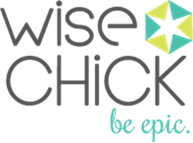People like knowing what’s coming and what to expect next in most situations. This no different in a work environment. When you’re working as a consultant, and entering into a business or project as a new asset, finding a development rhythm is extremely important to the process.
So, what does it mean to have a rhythmic development process? Well, it means that you’re on a regular release schedule. It’s about finding your rhythm and sticking with it. We’ve talked before about answering the question: How are we going to eat this elephant? Finding a development rhythm for your project and team is a big factor in accomplishing that task.
You need to establish what all the moving parts of a project are, map out your goals and deadlines for your project, and then set small goals/deadlines up until that end point. We can consider these as checkpoints along the way. These checkpoints make up your complete destination. Just like anything, you have to get on a schedule. When should your releases be? How will the work be divided up? Who gets what chunk?
Finding a rhythm here is a key to keeping order within your project. As we said before, people like to know what’s coming next. If someone has a set release schedule, they can see their deadlines mapped out in front of them and they know what to expect next. Once we do A, we will be moving on to B and C. This rhythm encourages focus.
How do you find this rhythm? First, find out how much work your team can get done per interval. In order to come up with a plan, you have to understand how much your team can deliver by a given deadline. One of the biggest advantages of finding your development rhythm is being able to stay on a schedule to give your clients’ clients results or the project they need by a certain deadline. This not only keeps your team on task, but also the entire project on task.
Just because you get a rhythm going doesn’t mean that you can’t adjust your schedule if necessary. The point is you’ve found your groove. You and your team members are getting used to a certain flow and, for the most part, you are sticking to it. You and those you’re working with now know what to expect next and, if you need to adjust your sails a little bit, you all have a base point to return to. You have now established the norm for the way things should be accomplished.
Do you make a point to establish a development rhythm when working as a consultant? Have you been able to accomplish what you set out to do? What have some of your issues been? Comment below!





